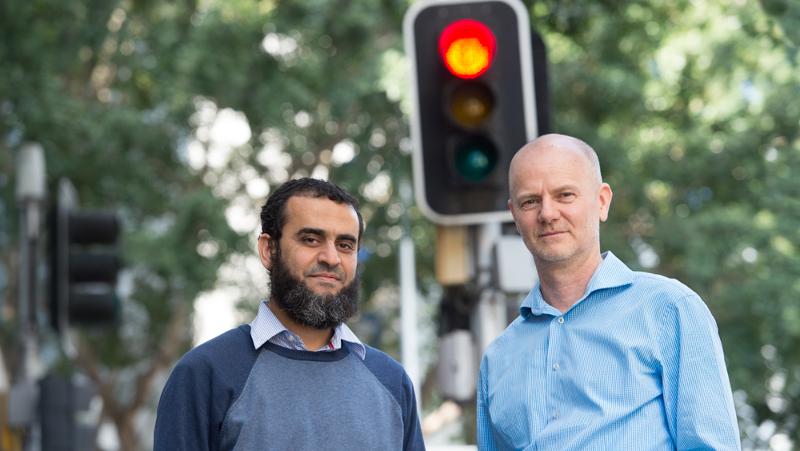
Early warnings about pedestrians crossing a signalised intersection, red light violations and traffic queues are just some of the latest advanced vehicle warning systems being evaluated by QUT researchers.
The Ipswich Connected Vehicle Pilot, Australia’s largest on-road field trial to test and evaluate Cooperative Intelligent Transport System (C-ITS) vehicle safety technologies is being delivered by Queensland Department of Transport and Main Roads (TMR) and iMOVE Cooperative Research Centre (iMOVE CRC).
The trial is also supported by QUT’s Centre for Accident Research and Road Safety-Queensland (CARRS-Q).
QUT Research Fellow Dr Mohammed Elhenawy will unveil details as to how the driver safety data will be assessed at the upcoming 6th Australian Intelligent Transport Systems Summit in Sydney on August 28-29, 2018.
Five hundred vehicles, including public and fleet vehicles, will be retro-fitted with C-ITS hardware and software for the pilot study, taking place in Ipswich from late 2019.
WATCH VIDEO OF THE POTENTIAL HAZARDS
C-ITS devices will enable vehicles to communicate with other vehicles and infrastructure, such as traffic lights, as well as road operations and cloud-based sharing systems, in real-time.
The Human-Machine Interface (HMI) software will display safety-related messages to the driver about potential hazards such as:-
- Emergency electronic brake light warning
- Slow/stopped vehicle
- Turning warning for bicycle riders and pedestrians
- Road works warning
- Traffic queues and advanced red light notification.
“We are evaluating the safety benefits of the C-ITS by examining the difference in driver behaviour when th e message system is active and inactive,” Dr Elhenawy said.
“We must ensure the C-ITS is fine-tuned to ensure the driver changes their course to avoid a crash or hazard, and thereby ensure the safety of themselves and other road users.
“The driver remains in control of the vehicles at all times, and manually responds to the safety messages.
“The way the vehicle responds to the safety message is in no way automated.”
He said the effectiveness of the safety warnings will be dependent on certain variables when the message is sent, such as the distance between two cars, driver and vehicle related factors, road surface condition and traffic flow information.
Professor Andry Rakotonirainy said vehicles involved in the trial would be fitted with a range of wireless and sensor technology.
“We have an opportunity to consider if the system operates in the way it is intended and if it results in the desired behaviour from drivers and improves driver safety,” Professor Rakotonirainy said.
CARRS-Q’s Dr Andy Bond, who is also involved in research team, said the trial was an opportunity to validate the safety benefits associated with greater awareness and instrumentation of transport systems.
“By working together with greater, targeted information, drivers and ultimately vehicles can better manage challenging driving scenarios,” Dr Bond said.
The study forms part of a larger program of research with TMR and iMOVE CRC including work being conducted into the public’s awareness and understanding of cooperative car technology.
Participants are also being sought by CARRS-Q for a survey regarding the knowledge of transport technology and their willingness to adopt the new technology.
More information can be found by clicking here.
Media contacts: Debra Nowland Office 07 3138 1150 or Rose Trapnell, QUT Media Team Leader, media@qut.edu.au, 0407 585 901.



